15 Tips for a Successful Group Hike with Dogs
I’ve watched as, over the last few years, hiking with groups of friends and their dogs has become more popular.
Whether you call them group hikes or pack walks, going with other friends and their dogs can be fun.
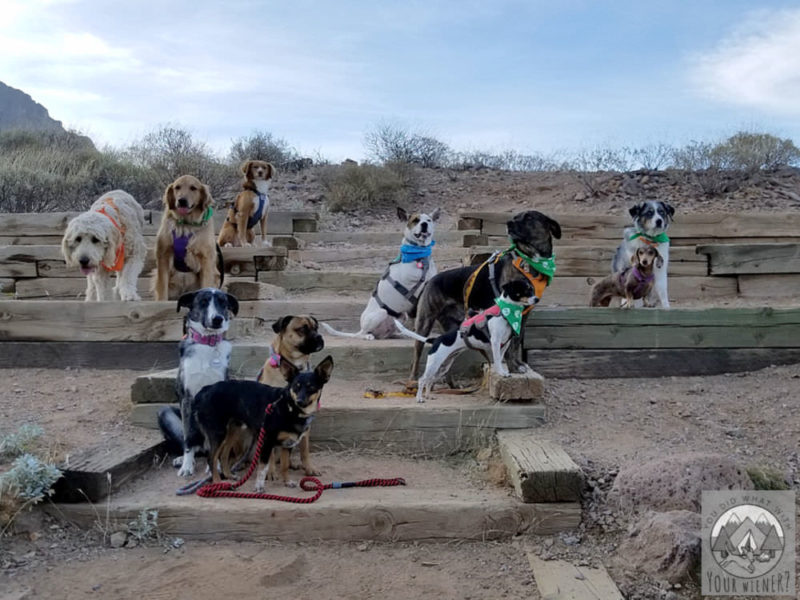
However, there are some things that can be not so fun if the group doesn’t think ahead. And these potential issues can be easily amplified the larger the group is.
Large groups can be disruptive to other hikers on the trail, dogs can get stressed out or have disagreements, and it’s easier for a dog in your group to sneak off and bother others.
I’ve been organizing, and attending, group hikes with dogs for almost 10 years. The group size has ranged from 2-20 dogs.
Over time, I’ve learned a lot an compiled a good list of guidelines to follow to make sure everyone – in the group and other users – has a positive experience.
9 Tips for Organizing a Group Hike for Dogs
If you are hosting one of these group hikes, or pack hikes as some call them, you have at least a little responsibility for the dogs and people attending.
If you are organizing a pack hike, you have a responsibility to the group. Be as informative as you can about the even and help people, and their dogs, have a good time.
Here are the things I find are important to running a smooth event and minimizing any potential conflicts.
Limit the Group Size
A group with fewer dogs and people are easier to manage so consider limiting to it to 4 or 5 dogs, especially if this is your first time.
Besides a smaller group being easier to deal with, many trails have rules that limit the group size to 12 as to not damage the environment or be a nuisance to others on the trail.
The most responsible interpretation of that rule means you include all heartbeats in the group-size count.
For example, if each person owns one dog, the group should be limited to 4 human/dog pairs (because you and your dog count too).
Based on my years of experience, not everyone will show up to the hike.
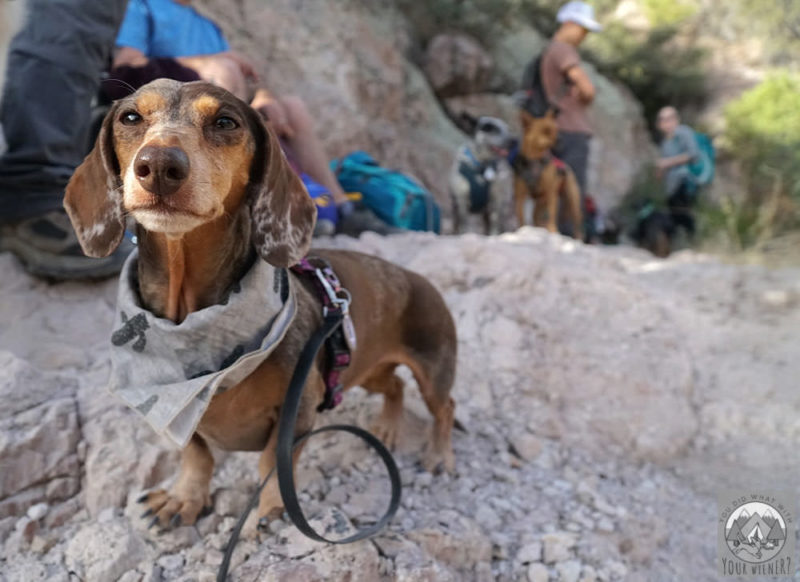
I feel it’s a good turnout if 75% of those that said they were coming actually do. A no-show rate of 50% is really common (so don’t feel bad if it happens to you).
You can take the potential no-show rate into account if you are limiting your group size.
If, in the scenario above, you limited the RSVP list to 4, and 50% of the people didn’t come, then you would only be hiking with 2 other people.
If that is ok with you, then don’t over-estimate how many people can RSVP to the event. If you want the group to be larger, then add a couple extra spaces to compensate for those that cancel.
An example would be, the max group size you prefer is 4 human/dog pairs, but want to account for potential no-shows, then make 5 total spaces available.
In the “worst” case scenario, all of them show up and you have a total of 12 heartbeats (5 humans and 5 dogs, plus yourself and your dog) If not everyone shows up, then the group size will be well within the limit.
When calculating your group size, be sure to count the dogs and make sure you find how how many dogs each person is bringing.
Remember, when doing your calculations on group size, some people may be bringing more than one dog with them.
Provide a List of What to Bring
You might assume most people know what they should bring on a hike but it’s always good to remind people just in case.
Don’t hesitate to list the basics like poop bags, extra water, snacks, and rain gear.
Providing a list is also a low-key way to start to the discussion about requiring leashes (if you will be) by stating “be sure to bring a leash.”
You’ll also want to list any specialty items people will need like parking permits or passes, snowshoes or microspikes in winter, a high-clearance vehicle and/or 4WD to get to the trailhead, or dog boots.
Set Group Expectations Ahead of Time
What you do out on the trail when you are alone is your business. However, consider that you have an increased responsibility when you are inviting others, sometimes strangers, to join you.
When you are hiking in a large group, people are noticing you. Make sure all dogs and people in your group are setting a good example.
Larger groups are more visible and may be unknowingly setting an example for others (whether good or bad).
Remind them that, as a group, you need to follow the rules of the trail and practice Leave No Trace Principles – no digging holes in the middle of the trail, no trampling or digging up vegetation, picking up and packing out pet waste, etc.
Although you will be treating your event like you have a responsibility to the participants, make sure that you are not actually on the hook if anyone gets injured or otherwise has a bad time.
Make it clear from the beginning that you are suggesting that people meet up in one area and do the same hike, and you are happy to share your experience, but that you are in no way liable for others.
Make liability clear – emphasize that, while you are selecting the hike location, and providing some information to them, each person in the group is responsible for themselves.
Make it known that each individual is responsible for their wellbeing and that of their dog.
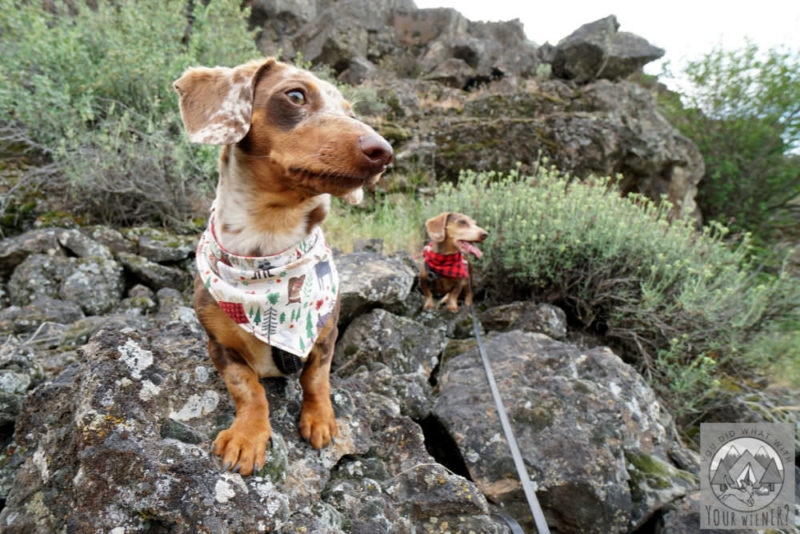
You might want to consider asking people to sign a basic liability waiver if it’s something you do regularly or is tied to a business (For example, some dog bandana companies on Instagram organize pack hikes).
That may sound a little overboard to some but being held financially accountable for something that went wrong on your group hike is definitely an experience you don’t want.
Match the Hike Difficulty with Group Ability
Make sure that the difficulty of a hike is communicated to people before they even sign up for your event.This will allow people to self-select if something is too hard for them.
Alternately, if you already know who will be attending, take a quick survey to see what the general fitness level of group members is and whether they want an easy or challenging adventure.
If there are any sections that may be difficult for people with bad balance, afraid of heights, etc, even if you don’t think it’s a big deal, make sure to mention it to potential attendees ahead of time.
You should always match the difficulty of the hike to the lowest common denominator in the group. Aim for nothing more than slightly challenging for them.
When you plan your group hike, consider the least able person. You should choose a hike as if this person represented everyone.
For example, if most of the attendees are fit hikers, but one is just starting out, it’s a good idea to pick an easy trail.
Despite your best efforts, it’s easy to find yourself in a situation where someone in the group isn’t up to the challenge and needs to turn back. No one should hike back alone.
Always plan ahead of time for this by identifying a person in the group that is willing to head back with this person.
Alternately, the person willing to turn around early if needed can be you and you can designate another capable person to lead the group in your place.
Avoid Crowded Trails
When hiking with a large group of people and dogs, it’s best to select a trail that is less crowded.
Maybe that means choosing a trail that is not famous in your area or “Instagram-worthy.” Maybe that means scheduling the hike on a day, and at a time, when less people visit.
With that being said, I get the desire to impress the group with spectacular scenery.
When possible, pick a trail that is now known for being busy and/or visit the trail at a different time than most other people go.
It’s also true that you will probably get a better turnout for your hike if it’s a popular trail and at the peak time most people have off.
So sometimes you just go and be prepared to deal with whatever you may encounter.
You can plan for the crowds by allowing extra time and making sure everyone packs extra kindness and patience..
Have a Plan and Allow for Variations
My strategy is to plan the hike and then make allowances for the unknown.
In regard to time, I plan how long I think it will take us and then add an extra hour or two just in case things go wrong.
Because they usually do when you are trying to coordinate a large group of people. Especially people you don’t know well.
I also like to have a plan B hike, preferably not too far away from, or different in difficulty than (easier is ok), the plan A hike.
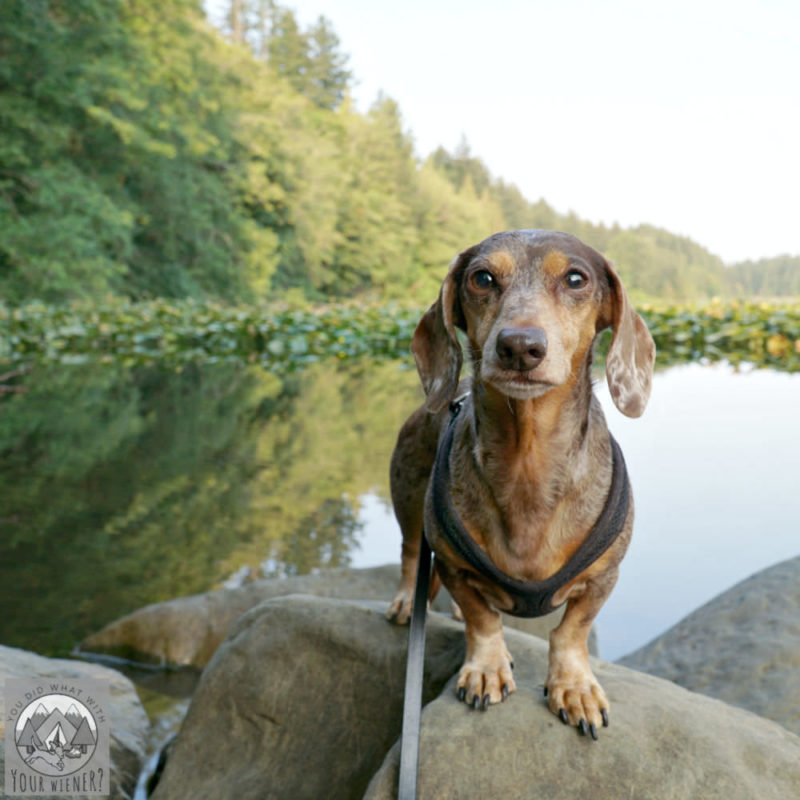
You never know when there may be an accident on the highway that prevents you from getting to your desired destination.
Other things that can go wrong are arriving to find a full parking lot and nowhere to park, a tree across the road preventing you from getting to the trailhead, or someone not feeling well.
Encourage People to Advocate for Their Dog
It’s helpful to start a conversation among people about their dog’s personality and needs before the hike.
Make sure people feel safe asking for what their dog needs.
For example, their dog may need to be greeted by other dogs in a certain way.
This also allows them the space to share about their dog’s personality – to warn them in some cases.
I always let people know that my Dachshund Gretel can be a bit “grumpy” towards other dogs when we are standing around but she is calm when we are hiking together.
Let others know if your dog needs some space or how they like to greet other dogs.
I ask them to try to prevent their dog from rushing up to her until she was had a chance to meet them properly.
Keep People Updated
Stay in communication with your group leading up to the event.
This is especially important if some of the people have never been to the particular trail you will be hiking.
I like to provide a group update at least a week in advance and then again the day before.
I send out reminders about the location, the anticipated weather conditions (see below), and invite people to ask me questions.
I also keep reminding people to tell me if they are no longer able to make it so I know how many people to expect (and wait for).
Be Mindful of Weather Conditions
Be sure to check the weather in the days leading up to the hike. For most areas of the country, it’s easy to find a 10-day weather forecast.
The weather forecast can change daily. Make sure you check it at least once leading up to the event and then they day before.
I also check the weather several times before, and up to, the day before the event. Weather can change significantly from day to day.
I provide people an update on the weather in my day-before reminder.
Consider canceling or rescheduling your hike if it looks like weather conditions may be dangerous.
Potentially dangerous weather conditions include, too hot, too cold, flash flooding, and thunderstorms/lightening.
Some weather hazards can be mitigated, like going early when the temperatures are cooler and bringing extra supplies to stay warm, but never put your group at risk just because everyone was really looking forward to the hike.
Also, if you are hiking in the mountains, remember that weather conditions can change dramatically in an instant.
If you aren’t skilled at observing and interpreting the weather on the fly, ask if anyone else in the group is. At the very least, watch for obvious signs like grey clouds, significant wind shifts, and lightening in the distance.
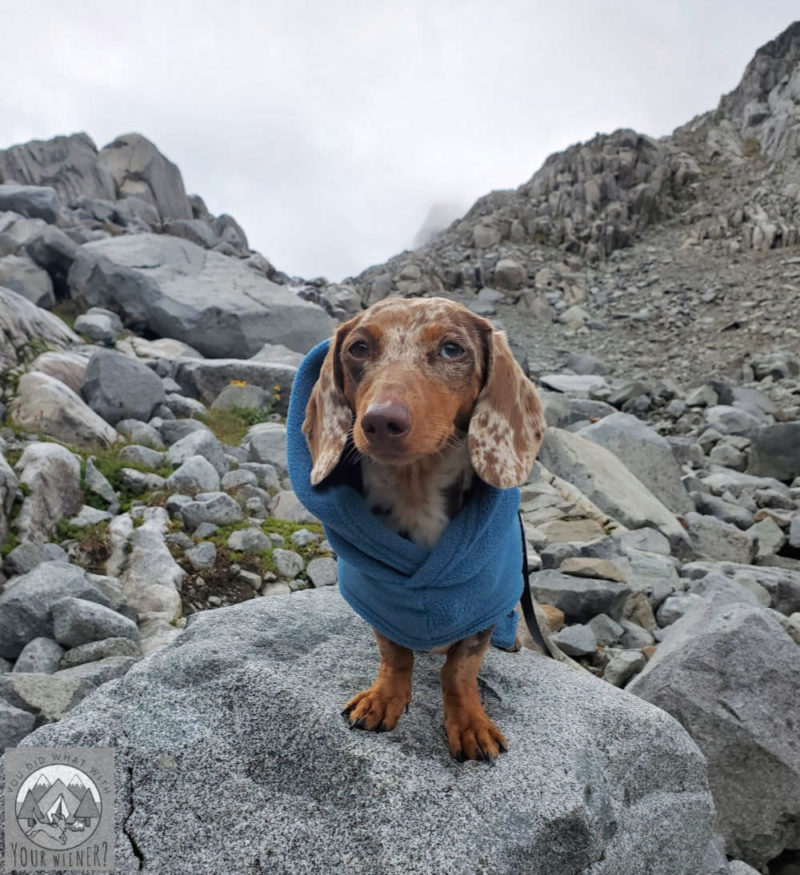
Do a Pre-Hike Huddle Before You Set Out
Meting up with a group of people and their dogs may seem like a casual thing to do. It’s something that should be taken seriously though.
A morning huddle may be a one-minute conversation or it could take 5 minutes.
The goal of this pre-hike meeting is to check in with everyone to address last-minute concerns and also to remind people of potential dangers on the trail and what to do about them.
Some things that may be important to discuss include rattlesnakes and what to if a dog or person is bitten, places along the trail that may need extra caution when traversing, what to do if one of the dogs gets lose and runs off, or what to do if a member of the group gets sick.
Reiterate important points you may have made in previous emails or messages because, let’s be honest, not everyone is going to read them fully.
6 Pieces of Advice for Attending a Group Hike With Other Dogs
Sometimes you are not the person organizing the group hike.
If you are a participant in a group hike with dogs, consider these important things. It will help you, your dog, and everyone else have a good time.
If you find yourself being a participant in someone else’s event, these reminders will help you and your dog have a good experience.
Go Prepared
Be sure to bring all you will need to keep you and your dog comfortable before, during, and after the hike.
This is what I bring on every adventure for my dogs. That’s the minimum.
I often bring many of these things too when I’m hiking with my dogs.
Respect the Other Dog’s Space
I respect that not all dogs are immediately comfortable with other dogs. My Dachshund Gretel is not and I know that’s not uncommon.
Contrary to popular belief, not all dogs need to say hi to each other. A first-time meeting with strange dogs is not always the time to work on socialization.
I always ask before approaching a new dog in our group, or other dogs on the trail, to make sure the owner is ok with it.
Always ask if the other person’s dog is ok with greeting strangers right now.
If the owner says no or that their dog needs space, I don’t take it personally and move on.
Ask Before Giving Treats
Many dogs have allergies to certain foods.
For this reason, you should always ask before giving another dog treats.
Remember to Stay Attentive
Keep an eye on your dog and make sure to know when they are reaching their limit.
In fact, I recommend keeping an eye on the other dogs in the group too and being wiling to mention something to the owner if you think something might be off with their dog.
I think it’s better to err on the side of caution.
It’s super easy to get distracted while talking or taking photos and let your dog get out of your sight or fail to notice when they are slowing down.i
If your dog gets out of your sight, it might startle someone, or worse, steal their sandwich!
Hike Your Own Hike
Even though you are hiking in a group, you and your dog is are still hiking your own hike.
Let the group know and don’t be afraid to turn back, or wait until others finish the hike and come back for you, if it’s not a good idea for you or your dog to continue.
Don’t let the need to “prove yourself”, or ego, get in the way of your better judgement. If something feels off, it’s better to cut things short than get injured or sick.
Don’t Forget Your Camera
Definitely don’t forget your camera!
That way to can document your dog’s day out with friends and the beautiful landscape.
Follow these tips for taking great pics of your dog hiking and these tips for taking good pics with your smartphone.
May your next, or first, group hike be as enjoyable as you imagine!
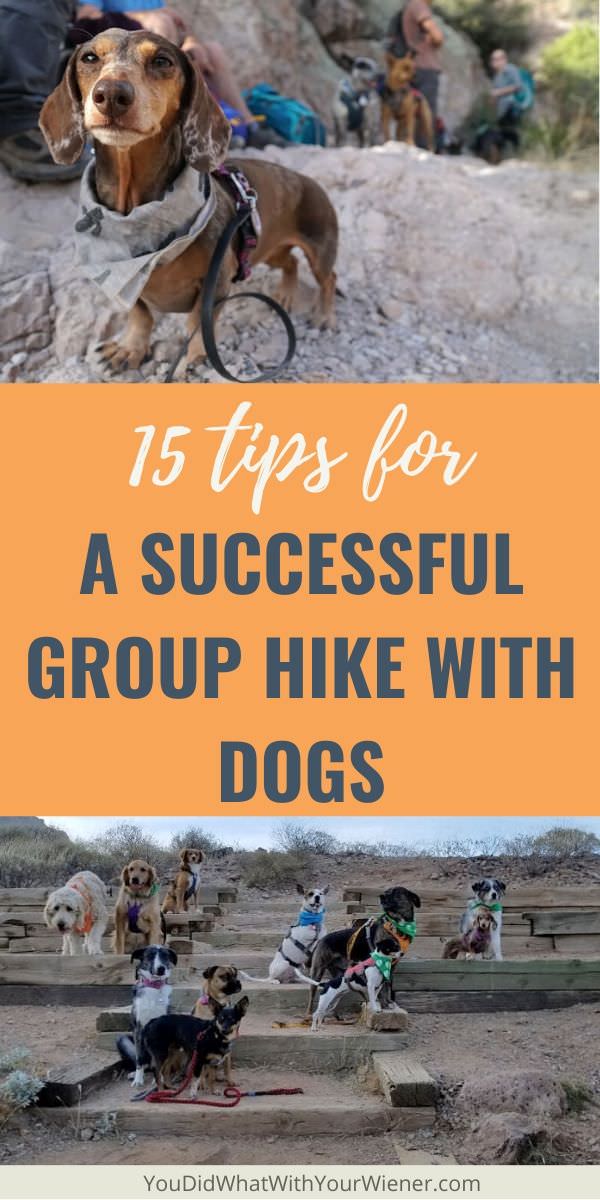

About the Author
Hi, I’m Jessica. I’ve been studying the Dachshund breed since 2007, owned 3 of my own, and shared in the lives of thousands of others through their owner’s stories. When I’m not sharing what I know on this blog, you can find me hiking, camping, and traveling with my adventurous wiener dogs.

I loved reading your article. I have a dog hiking group too. I’m wondering how do you handle off-leash rules? For example, if a dog is running back and forth through the other members on the hike.
Hi Karen. That’s “tricky” and I usually take it case by case. I organize hikes for an organization and they require leashes regardless of the actual laws of the trail for liability reasons. That takes the weight off me for making that call. For my own groups, I require leashes be used on all trails that say you must do so and those are most of what we hike. If we are on a trail where they’re not required, I have learned to set the expectation early. First, before we go, I tell the group that leashes are preferred for safety but not required on the trail so they may encounter off leash dogs inside and outside of the group. I also let people know that, regardless of the rules, if their dog is running back and forth and bothering/stepping on other dogs, they will be asked to hang back and keep their dog by their side or they will have to leash them. In the end, my philosophy is that it’s my group and I can run events however I want. If someone doesn’t like my rules, they don’t have to come.
Thank you so much for the great advice!
Happy Trails,
Karen
Florence, OR